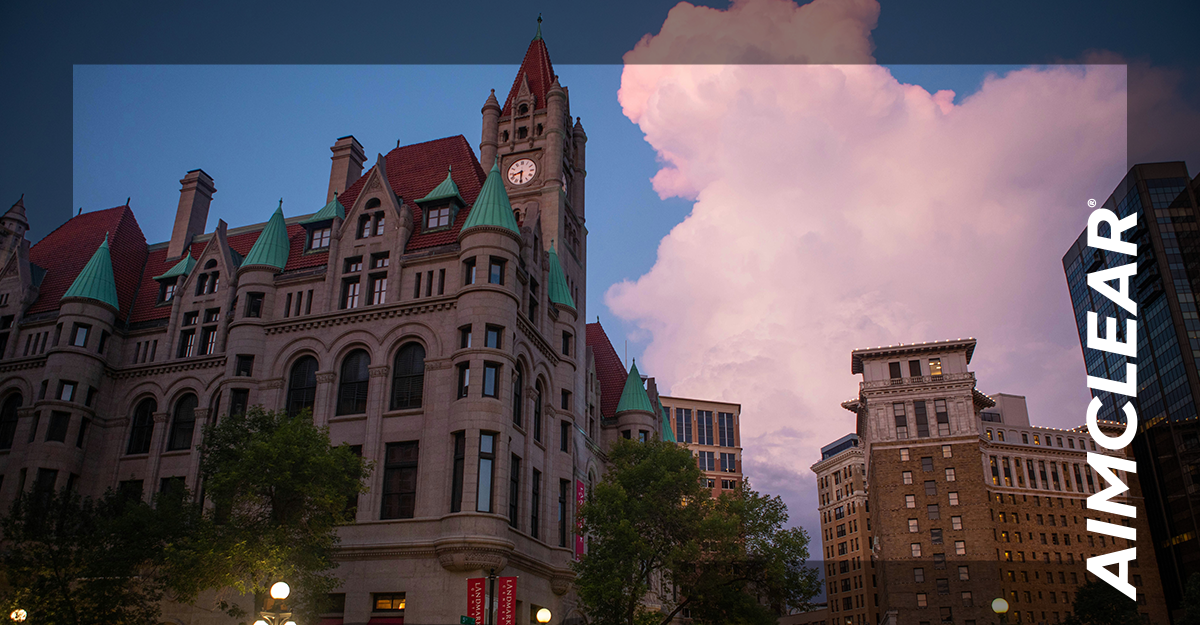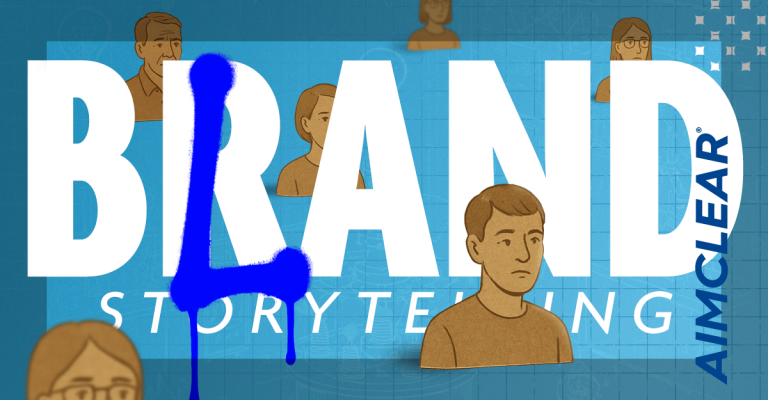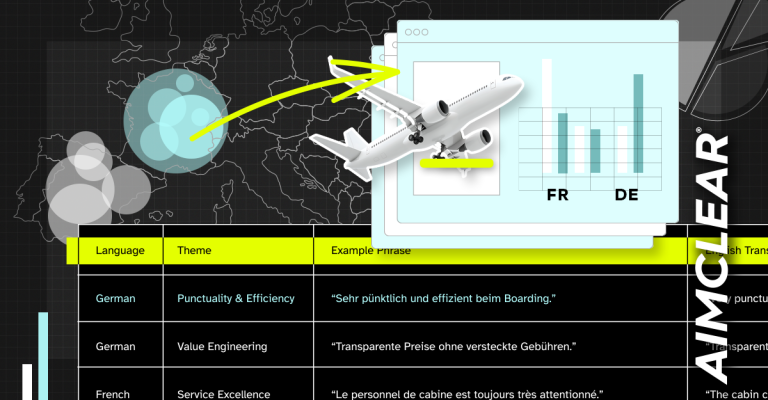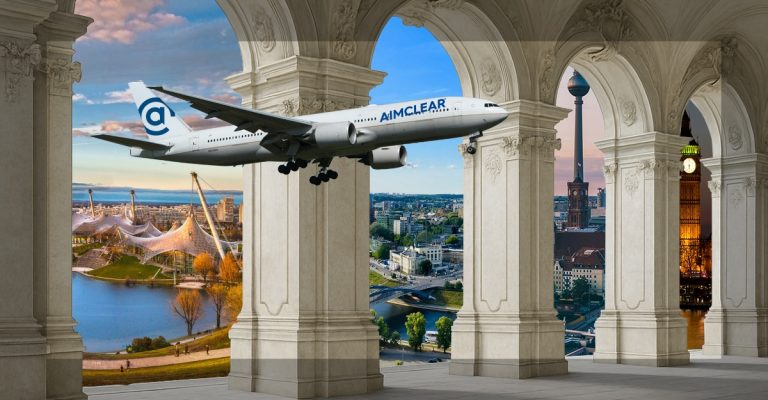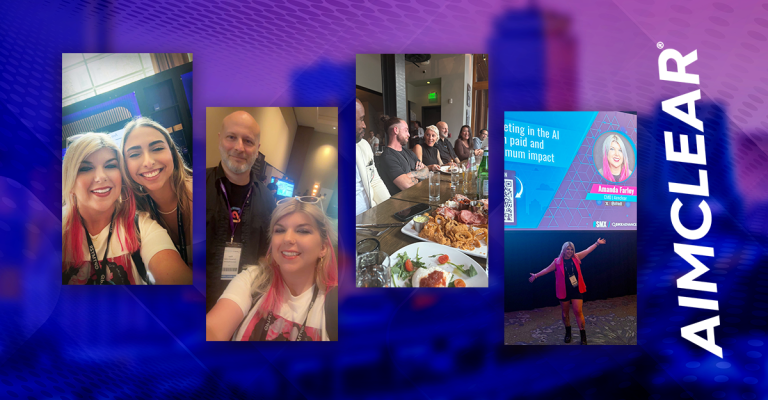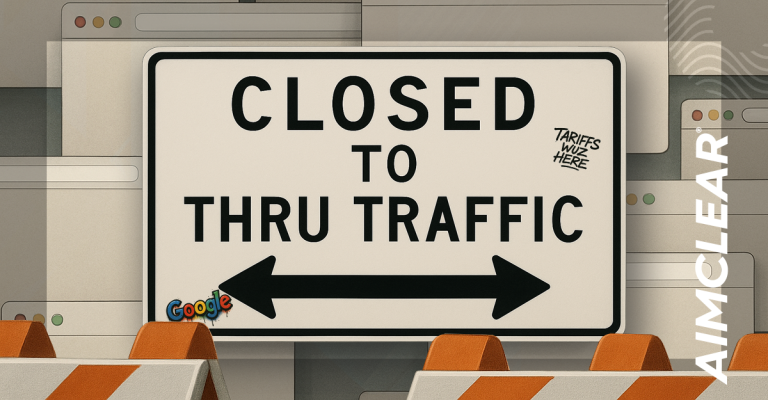If a “Top 10 Sucky Jobs in Marketing & PR in 2025” list existed, promoting commercial real estate and downtown business districts would likely rank pretty high. AIMCLEAR knows this all too well, as the cities we call home are all at differing places on an economic vitality spectrum. In Minnesota, Duluth and St. Paul find themselves somewhere between “lagging” and “doom spiraling.” Detroit, Michigan, on the other hand, is in the midst of a years-long renaissance.
Downtown St. Paul has been in the media crosshairs frequently as of late, most recently in an Axios article that asserted Minnesota’s capital city should look to Detroit as a blueprint for success. AIMCLEAR purposefully expanded to Detroit a few years ago, in part, for the city’s ability to swim upstream while too many others falter. With a first-hand view into both cities, it’s clear to us that St. Paul truly needs a proven model to follow.
Soon after the Axios article, we spotted a counterpoint LinkedIn commentary by Eric Larson, CEO of Downtown Detroit Business Partnership and owner of a respected commercial real estate and development firm. Eric has been with the Detroit Downtown Partnership for 35 years. He clearly has skin in the game when it comes to the city’s carefully curated renaissance.
On first pass, the Axios article about St. Paul seemed to hit the core of the issue, which is a need for meaningful investment by courageous business leaders willing to put their fortunes where their mouths are. Pretty simple – we need some “big money” players to save the day.
The realities are wildly more complicated, though. In his post, Eric calls out the overly-simplistic “blueprint” that Axios described, which implied Detroit was saved almost exclusively via the backing of an angel investor billionaire. Eric acknowledges his city certainly benefited greatly from investment and commitment of Rocket Companies founder and billionaire, Dan Gilbert. With hundreds of millions in investments and moving much of Rocket’s presence to downtown, the impact Gilbert has had is immeasurable.
However, Eric convincingly argues the city’s pivot to vibrancy hinged on highly complex, coordinated engagement of numerous influential players–the likes of Ford, GM, Penske Automotive, and others. He further credits major family/individual foundations, with names including Kresge, Knight, William Davidson, Ralph C. Wilson, and Hudson-Webber. He also declares equal credit for Detroit’s important business alliances and civic organizations.
Seeking a more detailed blueprint
The forces contributing to the challenges for Duluth, Saint Paul, and Detroit have many commonalities. Yet they are different enough that their respective roads to vibrancy will be unique and will happen on their own timelines, to a great degree.
Let’s hone in on St. Paul for a moment. Our office here overlooks beautiful Mears Park, a historic center that once entertained visitors arriving by horse and buggy 100+ years ago.
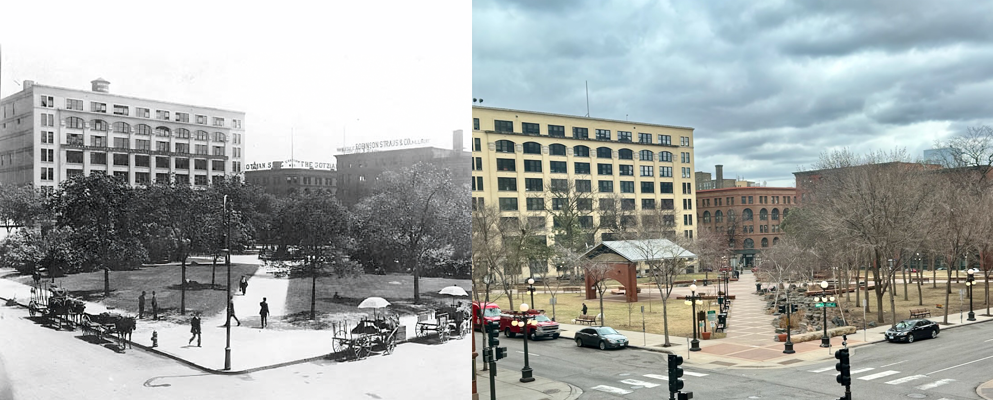
(1910 image courtesy MN Historical Society)
Photos from that era look remarkably similar to what we see today across from our office (sans the buggies, which are replaced with brand new Bus Rapid Transit service).
In 2025 alone, a hemorrhage of downtown businesses supercharged a steady decline in commercial activity since 2020. Seemingly weekly, the city endures more punches resulting from departures of longstanding restaurants and commercial interests. Most recently, the loss of the downtown’s last remaining grocer marked a seminal moment in the city’s decline, forcing our successful marketing agency to firmly demand more of our city leaders.
We contacted city administrators and elected officials seeking meaningful insight into the plan for revitalization. Essentially, we needed some reasons to remain committed to this community. We asked for specifics around:
- Addressing vagrancy in humane but meaningful and measurable ways
- Ensuring safe, pleasant passage within downtown via the streets and Skyway
- Empowering law enforcement to cite criminal offenses by those who contribute to a declining quality of life, with prosecutorial followup
- Assigning and maintaining accountability for conditions in the city’s hulking vacant commercial properties
- Creating conditions that make businesses and residents want to stay here, and then attracting others to locate here
These are foundational—not cosmetic—issues. And they don’t focus on macro challenges.
To give credit, the city has responded more openly than we expected. A staffer from the mayor’s office quickly came to our office to meet us. They seemed to listen earnestly to concerns versus typical responses of sharing various “reimaginations” and dreamy artist renderings showing the potential of long-vacant properties. And, they’ve begun answering our questions one by one. Even better, specific longstanding issues are being addressed to our satisfaction. Listening and then following through are great first steps to engender trust!
Our city council president and the head of a local business alliance are scheduled to meet us on our turf to hear our concerns and offer updates on the city’s reboot and recovery efforts. We plan to dig into Eric Larson’s insightful post to productively and collaboratively push city leaders to a Detroit-like renaissance.
Reality vs hope
With all of this as a backdrop, we have taken Eric Larson’s LinkedIn missive to heart. Too many cities seem to be deploying “hope” as a strategy, because the core problems seem insurmountable. The so-called blueprint that Axios highlighted boiled down to hoping for a billionaire savior–a “Field of Dreams” mindset that building something will magically make people come.
Cities like St. Paul, Minneapolis, Duluth, and countless others default too quickly to catchy messages of hope, using phrases such as “reimagining downtown.” They then amplify those phrases via news media and social channels hoping to inspire others. We frequently hear from fellow downtown business owners that reimagining a downtown is only good when backed with deep, trusted alliances between investors, business associations, city administrations, political leaders, business owners, and residents. All players focused on common, attainable goals, bolstered by the grit to do the hard work.
St. Paul has many of the same core ingredients as Detroit, albeit with different names. Target Corp., Ecolab, 3M, Medtronic, Toro, Best Buy, and other titans are based locally or have a strong Twin Cities presence. Financial powerhouses such as US Bank, Wells Fargo, Securian, Allianz, and others have a vested interest in renewed vibrancy. And century-old family foundations that helped shape St. Paul’s heyday, along with new-money foundations have the ability to motivate the masses.
We agree with the intended premise of the Axios article that Detroit could be a good blueprint for St. Paul. But painting it as a simple fix doesn’t really help when massive challenges need to be overcome. Detroit hasn’t reached its potential yet, but it’s clearly on the road to something that redefines the city for the 21st Century. To Eric Larson’s point, getting to a healthy state of being will be a long, tough slog. Meaningful vision, collaboration, and stakeholders willing to do great things together will be essential.
We have faith in all three cities for which we call “home.” And we’re here, at the ready, to be part of the solution.
And thanks to Eric. We’d love to talk!!!
